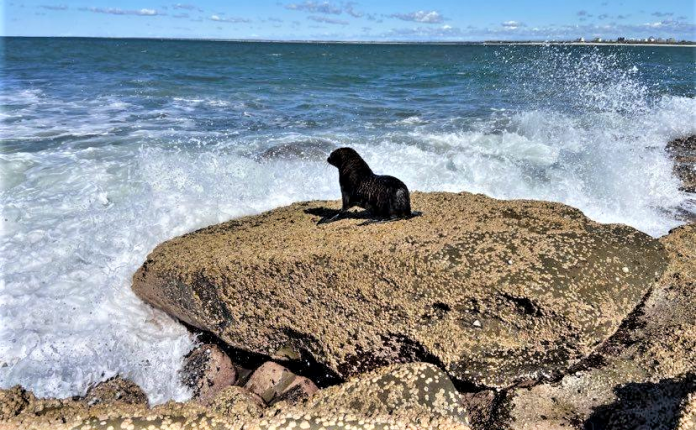Sunshine Coast wildlife “paparazzi” can’t believe their luck after snapping pictures of this southern tourist that has become quite the social media celebrity.
And like any Southern Hemisphere traveller heading north in winter, seeking sun, surf, hearty meals and a frolicking good time appear to be top priorities on a whirlwind tour of local beaches.
The New Zealand fur seal has been spotted from Kings Beach to Point Cartwright on rocks beside pounding waves, “bodysurfing” and floating along in the current.
The sightings follow those of at least one other on the Gold Coast over the past week in the ocean near Coolangatta.
Caloundra resident and businessman Tony Dunne was with grandchildren exploring rock pools at Kings Beach, heading towards Shelly Beach, about noon last Wednesday (July 13) when he experienced a thrill of a lifetime.
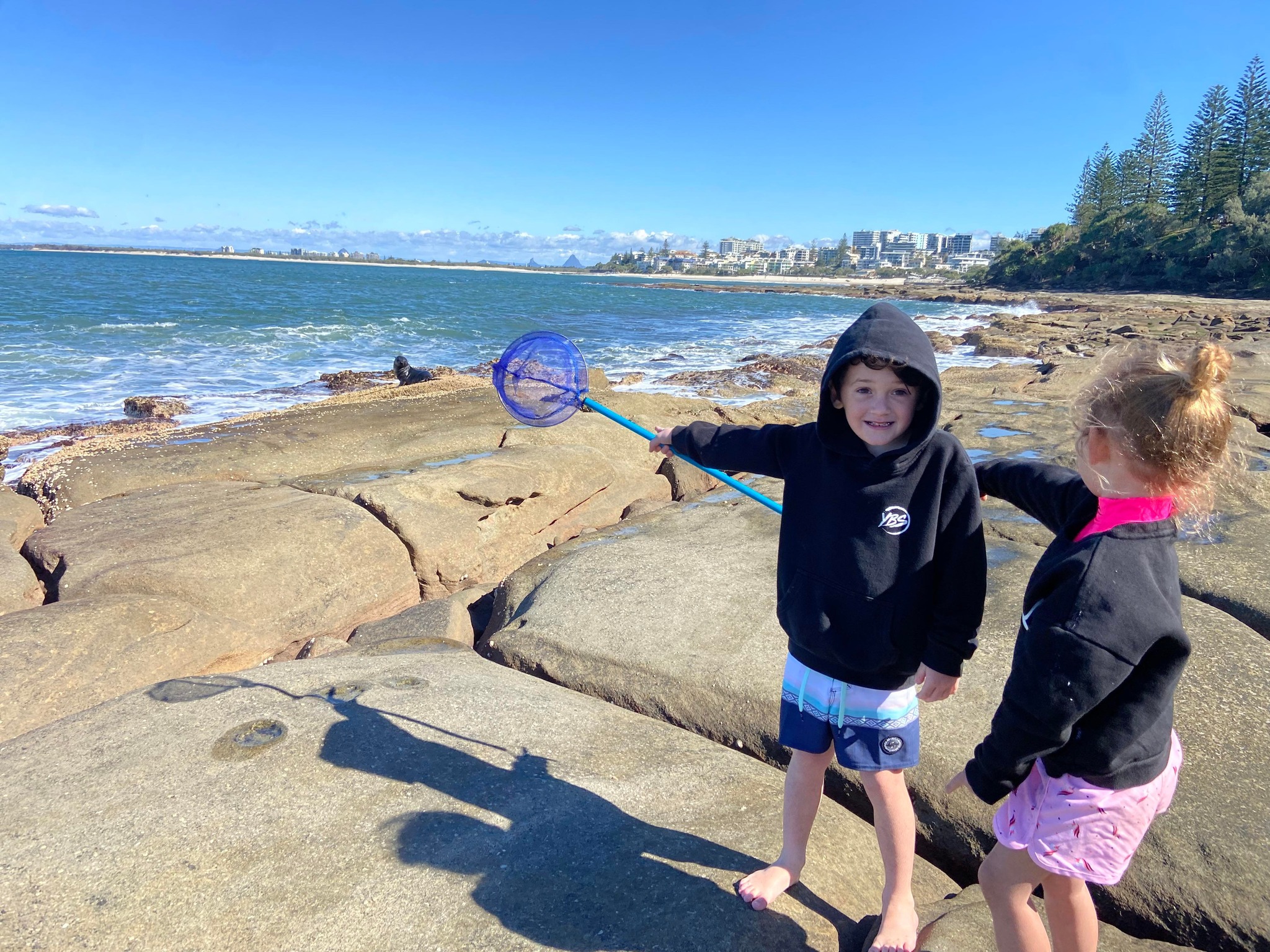
What could easily have been mistaken for a large black rock suddenly started moving, and he quickly pointed it out to the youngsters.
Staying a respectful distance away, he managed photographic proof of the seal sunning itself on a boulder.
Mr Dunne has lived here since 1966 and has never come across the cute-looking marine mammals before in the area.
“I’ve heard stories over the years … but to actually get to see them is a different story,” he said.
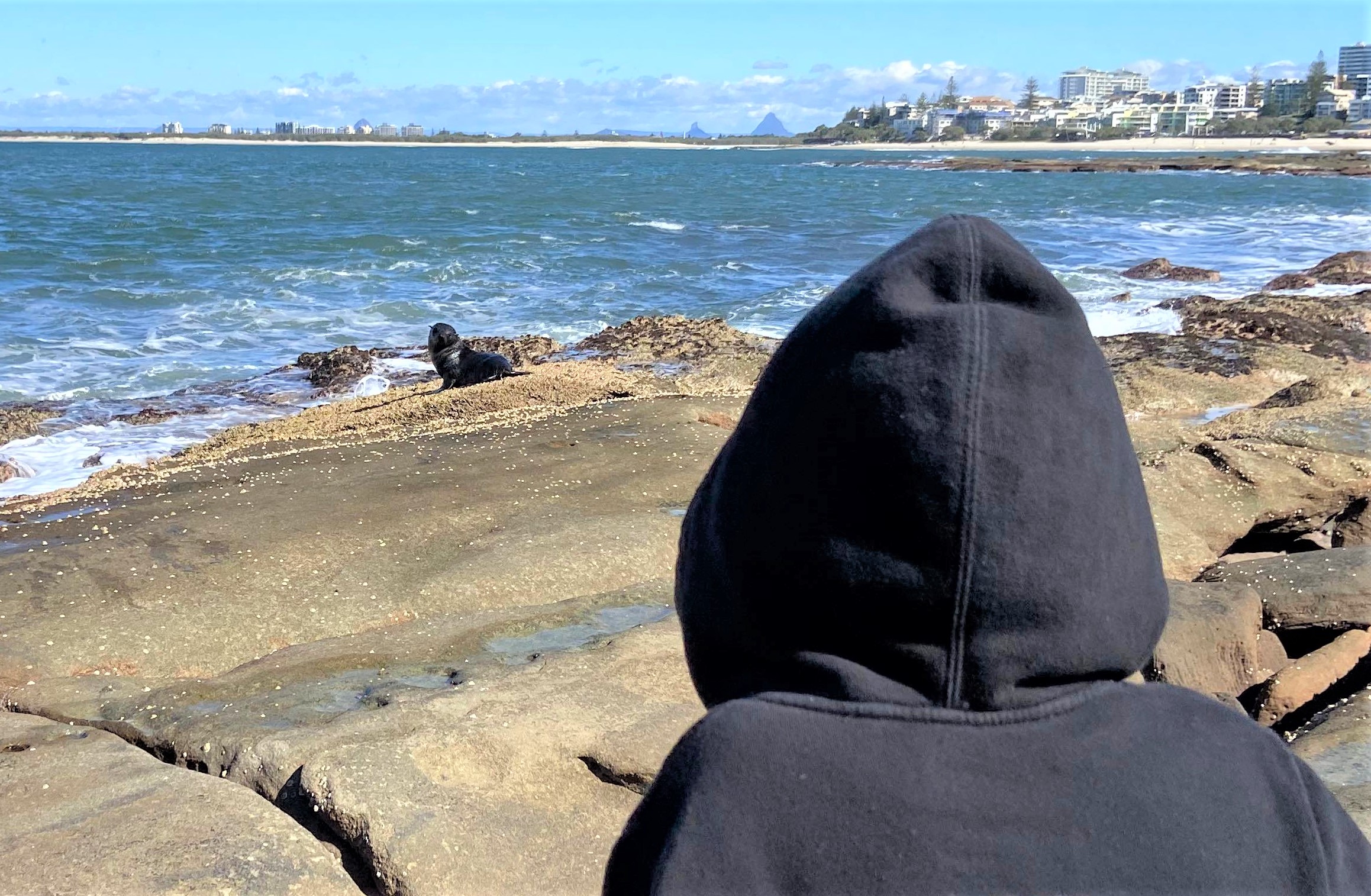
“When those waves come (crashing) up in front of the rock, you couldn’t actually see the seal. It was only when the waves went back down that you could see it.”
When Mr Dunne shared his photographic proof of the seal on Facebook, he was shocked to receive 174 comments, 124 shares and 111 reactions within a week.
But there’s also been the sceptics.
“I just had a lot of comments that people reckoned (the photos) were Photoshopped,” he said.
“I don’t know how to do that. People just won’t believe it.
“It is unreal looking at a photo of a seal and there’s Kings Beach, Caloundra.”
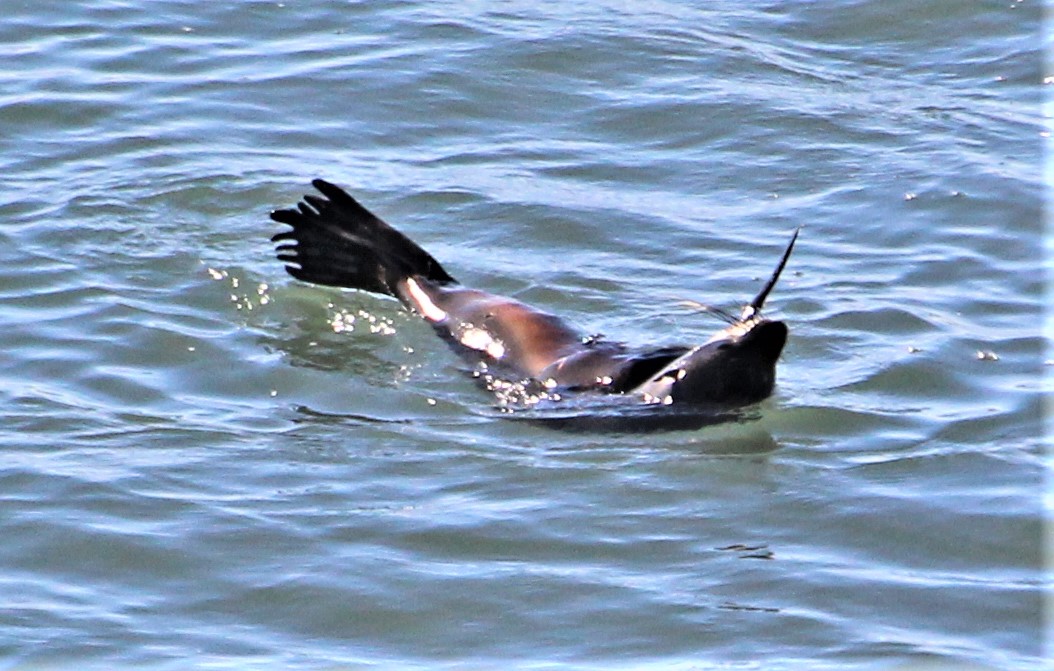
The New Zealand Fur Seal (Arctocephalus forsteri) is a medium-sized seal, easy to recognise due to its pointy nose, long white whiskers and standout dark-tan ears.
While known as New Zealand fur seals, the mammals are common in Australian southern waters, right across to South Australia and even into Western Australia.
Like stories about Sunshine Coast people doing great things? Help us deliver more by registering for our free daily news feed. All it requires is your name and email. See SUBSCRIBE at the top of this article.
Australian scientists often prefer to call them long-nosed fur seals.
In the days before commercial seal hunting was banned in the late 18th and early 19th centuries, the luxurious coat was a prized commodity. Numbers have now increased to about 80,000 in Australia.
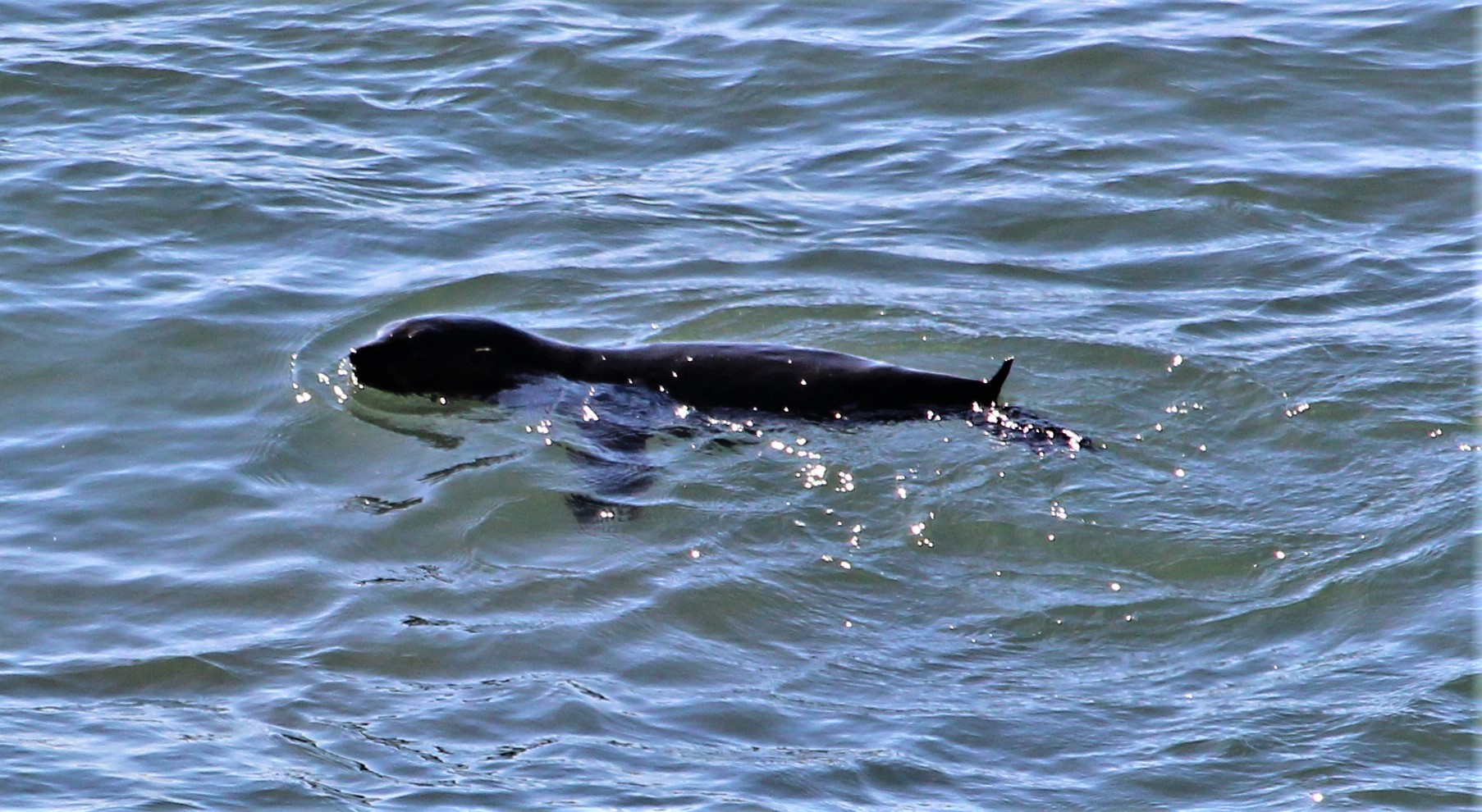
Marine scientist, former SEA LIFE Sunshine Coast seal team member and keen wildlife photographer, Mathew Lynn, was focused on an osprey perched on a tree just under the top of Moffat Headland when a black shape below caught his attention.
“I was laying on the side of this cliff, photographing the osprey and just saw this black shape (and thought): ‘Wow, that’s a little NZ fur seal’,” Mr Lynn said.
“It was unexpected, that’s for sure. It’s quite rare for up here on the Sunshine Coast.
“They’re so calm and they’re just lovely animals to see and to be around.
“I wish I had a bigger lens. I couldn’t get a really good photo of her.
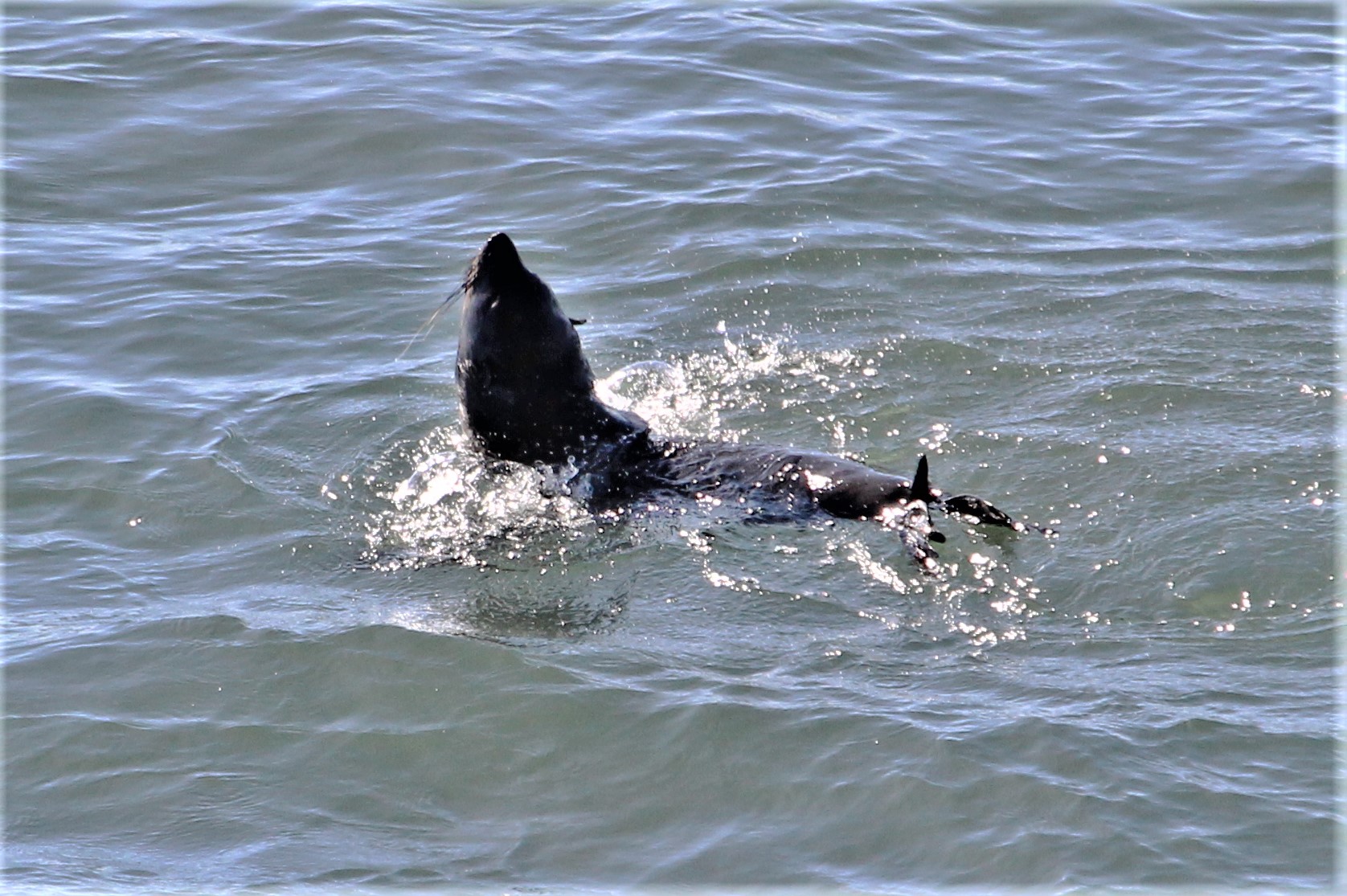
“I watched it for about probably 10 or 15 minutes. The osprey even noticed her and flew down to have a closer look.
“I’ve heard anecdotal stories about them coming to Caloundra and as far as Bundaberg before but that’s the first one I’ve seen in the wild.”
Do you have an opinion to share? Submit a Letter to the Editor with your name and suburb at Sunshine Coast News via: news@sunshinecoastnews.com.au
Mr Lynn had interacted with New Zealand fur seals as part of the seal show and his duties over 18 months at SEA LIFE Sunshine Coast at Mooloolaba but his background is in fisheries.
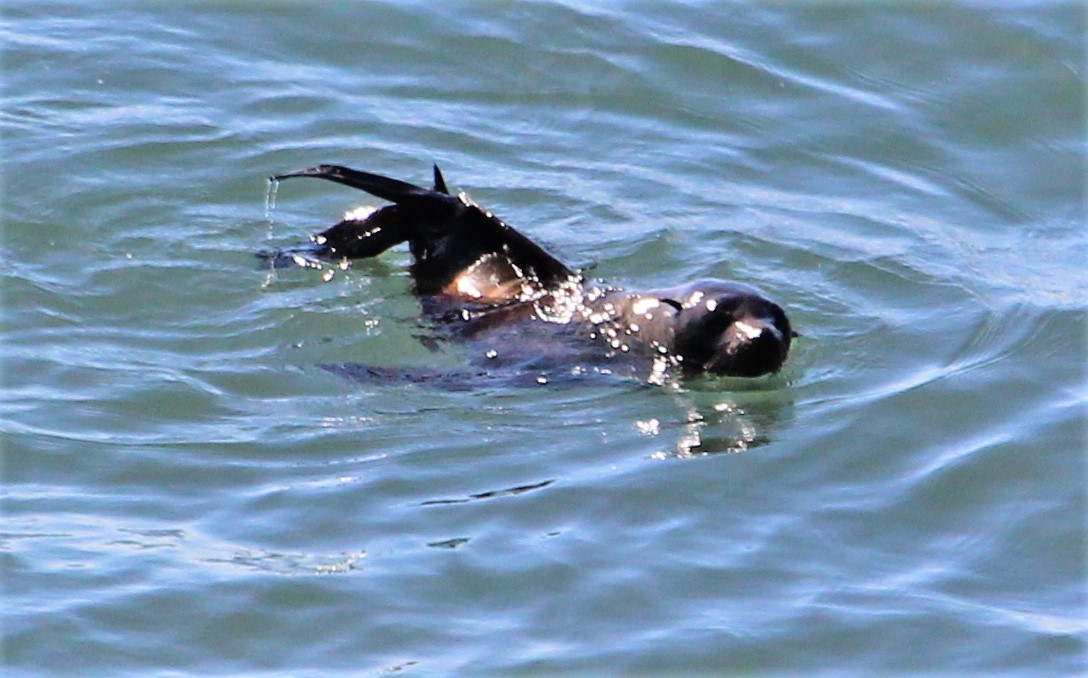
“We just had the mullet fishery open here on the Sunshine Coast so I’m presuming they (seals) followed the mullet up from down south. That makes sense,” he said.
“Mullet are really fatty and seals love mullet. It’s McDonald’s for them.”
SEA LIFE Sunshine Coast mammals manager Carla Haskell and a Sunshine Coast Council representative were able to admire the seal from afar, with its tricky position just under the water tower at Point Cartwright on Friday morning.
“It was on the rocks close to the water’s edge,” Ms Haskell said of her first Sunshine Coast sighting of a seal in the wild.
“It was difficult for us to get in close, close proximity to it due to the crashing waves.
“However, it was on the far end of the rocks having a nap. So, it seemed quite relaxed and it was in really good body condition.
“For me, it was rare and it was exciting.
“It’s lovely to see something that’s in such good condition and seems to be OK – normally it’s a rescue (we need to perform). So we’re happy.”
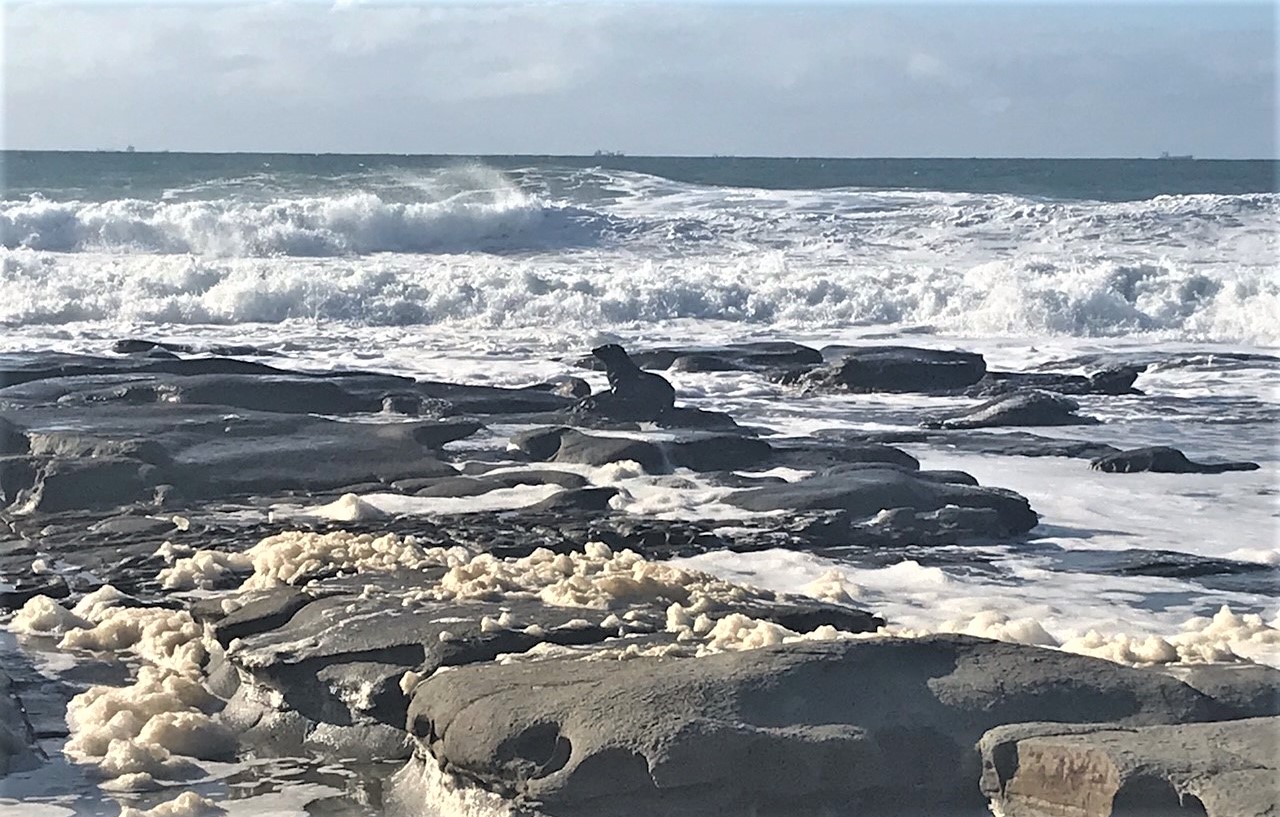
Ms Haskell said that without a closer inspection, she couldn’t confirm the gender but believed the seal weighed about 35kg, making it probably a sub-adult rather than a juvenile.
Seals often rested on rocks, especially after a long swim, and didn’t always need to be partially wet.
Local journalists supporting local people. Help keep independent and fair Sunshine Coast news coming by subscribing to our free daily news feed. All it requires is your name and email. See SUBSCRIBE at the top of this article.
“To be honest, it is rare (for a seal in local waters). I suppose due to the current climate and being winter, windy – the weather hasn’t been perfect, we would expect a few loners to come up the coast a little bit.
“I have heard that someone saw it fishing, which is also a great indicator that it is in good health and it looks like it has been eating well.
“I wouldn’t say it’s lost. It is far from home. I would have faith that it would know what to do and head back down eventually.”
Department of Environment and Science Southern Wildlife Operations manager Frank Mills said the DES was working with local councils to keep the seals safe.
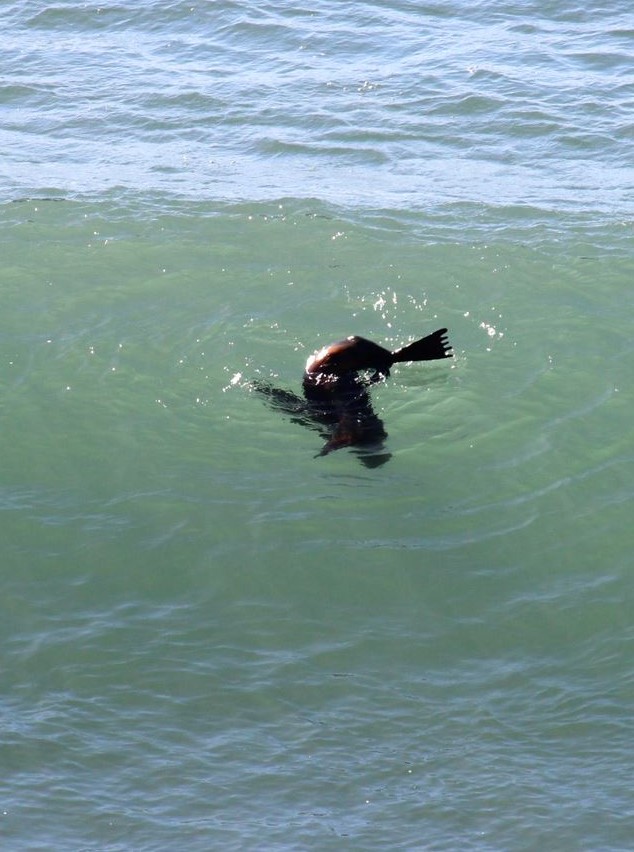
Under the Nature Conservation Act, people must not get within 40m of a seal when it is on the beach.
“Seals come ashore to rest and recover from their swim, and people are asked not to approach them and keep their dogs on a leash,” Mr Mills said.
“Seals can move quickly over short distances on land and may become aggressive if they feel threatened.
“They also carry diseases that can be passed on to people, so keep your distance and if you believe the animal is sick or injured, call the DES Hotline 1300 130 372 for assistance.
The New Zealand fur seals certainly seem to be broadening their horizons, with other media reports of a baby fur seal being found this month 3km from the ocean in a wheat crop on the Eyre Peninsula in South Australia before it was returned to its natural habitat.


